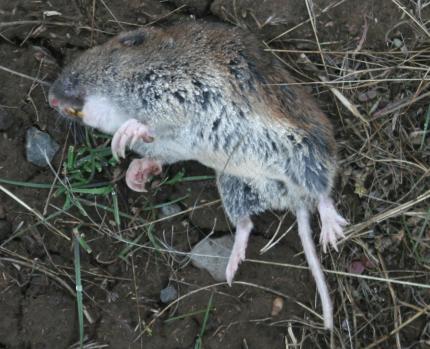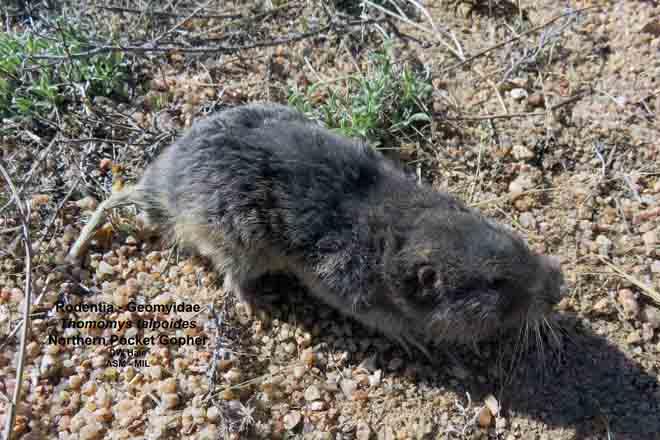Low-
Moderate
The current status and distribution of the Brush Prairie pocket gopher in Washington is unknown. It is known only from southwestern Clark County, a developing urban/suburban area.
Description and Range
Physical description
The Brush Prairie pocket gopher is considered a subspecies of the northern pocket gopher, which is the species commonly found in eastern Washington. This fossorial rodent has large front claws and stout front teeth. Pocket gophers may be confused with voles, which are also rodents but lack those characteristics.
Ecology and life history

Pocket gophers inhabits open grassy areas, including pastures, prairies, savannas, and open early seral woodlands and forests. It requires well-drained soil for burrowing.
Pocket gophers are herbivores that require grasses and forbs to eat, and well-drained soil for burrowing, and are generally territorial and solitary outside the reproductive season.
Females produce one litter of four to six young each year. Young are born in March to June. After weaning, female offspring often establish a burrow system nearby, but male offspring disperse.
Pocket gophers are the only truly subterranean rodents in North America, and thus are rarely observed above-ground. Burrows include foraging tunnels and chambers for nesting and caching of food. Though territorial, burrow systems are often aggregated in favorable habitat.
Pocket gophers are ecologically important as prey items and in influencing soils and plant species diversity, and their burrows are a retreat for amphibians, reptiles, and many invertebrates. Pocket gopher predators include owls, hawks, coyotes, and bobcats.
Geographic range
The Brush Prairie pocket gopher distribution in Washington is limited to southwestern Clark County. Their population size and trend are unknown. The lack of recent confirmed records suggests it may be extinct.
Climate vulnerability
Sensitivity to climate change
Low-
Moderate
There is no information on the sensitivity of the brush prairie pocket gopher to climate change. There is some evidence that pocket gophers in general may be sensitive to changes in temperature and precipitation that affect soil moisture and hardness, which impacts pocket gopher digging activity (i.e., burrows include foraging tunnels and chambers for nesting and food caching).
Exposure to climate change
Low-
Moderate
- Increased temperatures
- Changes in precipitation
- Reduced soil moisture
Conservation
Conservation Threats and Actions Needed
- Resource information collection needs
- Threat: Lack of data on current status and distribution.
- Action Needed: Determine population status and distribution.
- Threat: Lack of information on current threats.
- Action Needed: If this subspecies remains extant, determine threats that may exist.
See the Climate vulnerability section above for information about the threats posed by climate change to this species.
